Sauerkraut Recipe
Introduction
The little friend in your gut that makes you more than you might think...
As some of you might know, I'm fascinated with the symbiotic relationship between the human as an epiorganism and the saprophytic inhabitant living on our colon and intestines called the microbiome. You might also be aware that i'm raptured by mycophilia and this fact only connects me more to mycelium.
AKA the Gut-Brain-Axis, our enteric nervous system and intestines have critical receptors and important neuronal functions. Most of our neurotransmitters are also secreted by the enteric nervous system. Over 30 neurones and complex signalling pathways for enteric processes, such as immune response and functions like receptors for hypothalamic and pituitary hormones adapt to local colonic flora that manages nutrient availability and ensures gastrointestinal homeostasis.
This endobiogenic relationship goes way beyond a mutual relationship for intrinsic benefit. It exemplifies, that more than the brain, we are actually made up of a living and thriving eco-system also called gut microbiota. It also makes up most of our genome. This bidirectional communication through autonomic neurones with the central nervous system, directly interfaces the emotional and cognitive centers of the brain with peripheral intestinal functions via the Gut-Brain-Axis.
Apart from the remarkable finds on the Pathophysiological processes, this is still a very new and understudied field. The modulated effects on brain activity are observed in the vagus nerve that connects the viscera with the brain, finally reaching the insula. Many findings have proven dysbiosis to be the cause for central nervous disorders. A healthy balance in the gut flora therefore is crucial and can be achieved through probiotic treatment.
Botanically fermented foods such as Sauerkraut contain bioactive components such as prebiotic fibres. They interact with the gut microbiome, it's metabolites and various bioactive molecules improving gut health through probiotic and prebiotic properties. Microbes and bioactive molecules from fermented food integrate with gut commensals to produce immunomodulatory and anti-inflammatory metabolites that enhance our microbial genome, therefore giving us the ability to epigenetically update ourselves. Participating in metabolic processes, the gut microbiome has the ability to induce epigenetic changes. It modifies the host cell, that responds to stimuli and alters the host epigenome and augments gene expression.
Scientific Article: Crosstalk between the microbiome and epigenome
In this article i'd like to discuss Sauerkraut and how naturally fermented Sauerkraut can improve your overall health.
Sauerkraut Recipe
For the Following recipe I shall explain the steps on how to create naturally fermented Sauerkraut.
Ingredients:
White Cabbage
Red Cabbage
Savoy Cabbage
Salt
Black Pepper
Step One
Cut Cabbage
Step Two
Add Salt and maybe a bit of black pepper into the bowl with cabbage.
Step Three
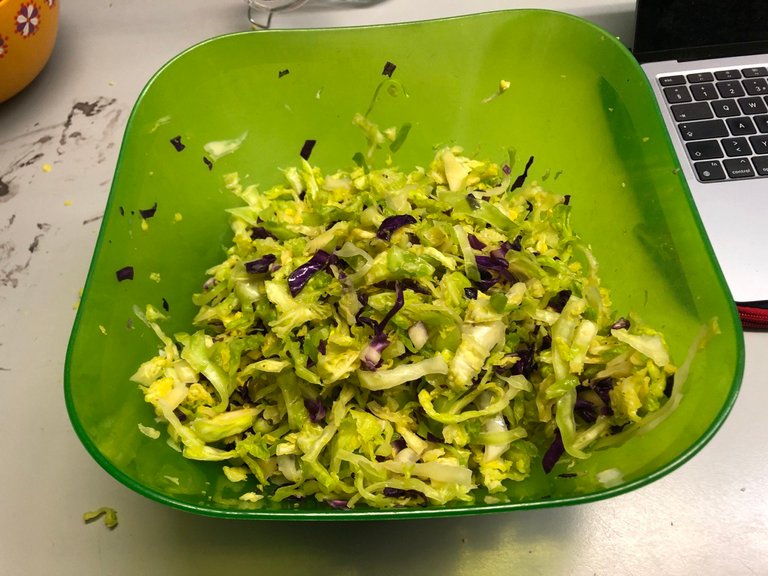
Knead cabbage for 10-15min until it becomes glossy and releases the juices from the cabbage.
Step Four
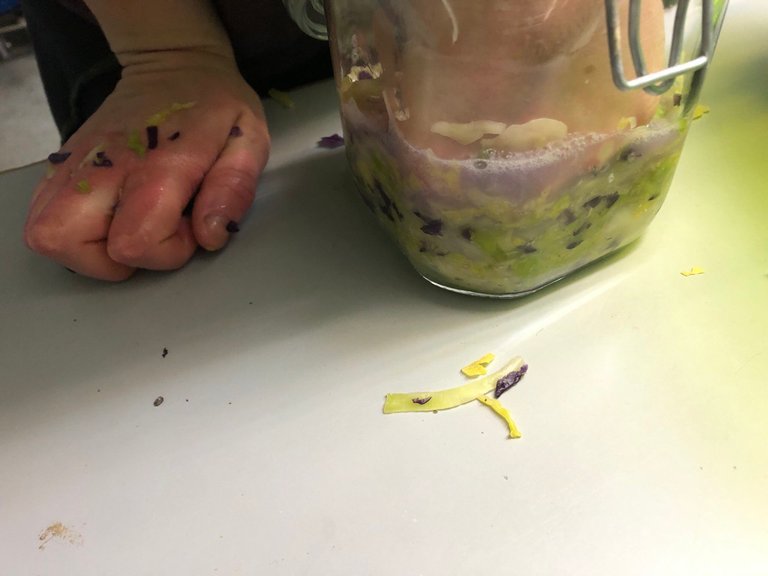
Press down the cabbage nice and tight in a mason jar. The liquid forms naturally from intense kneading. (No need to add any water)
Step Five
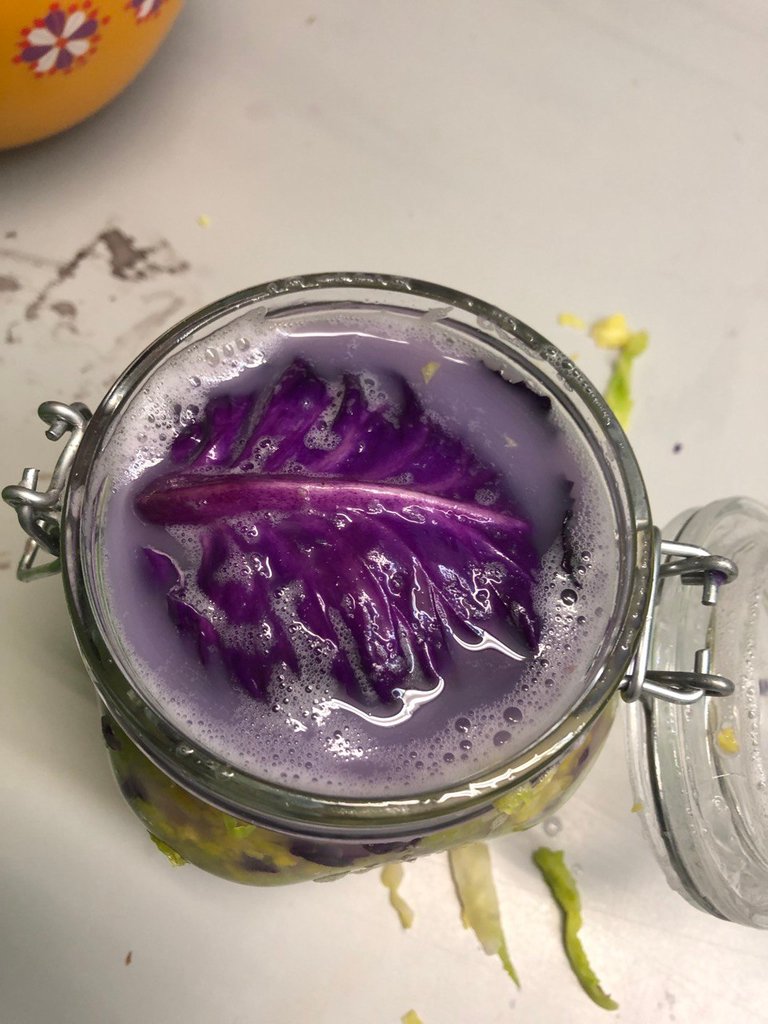
Add a leaf of Cabbage on top
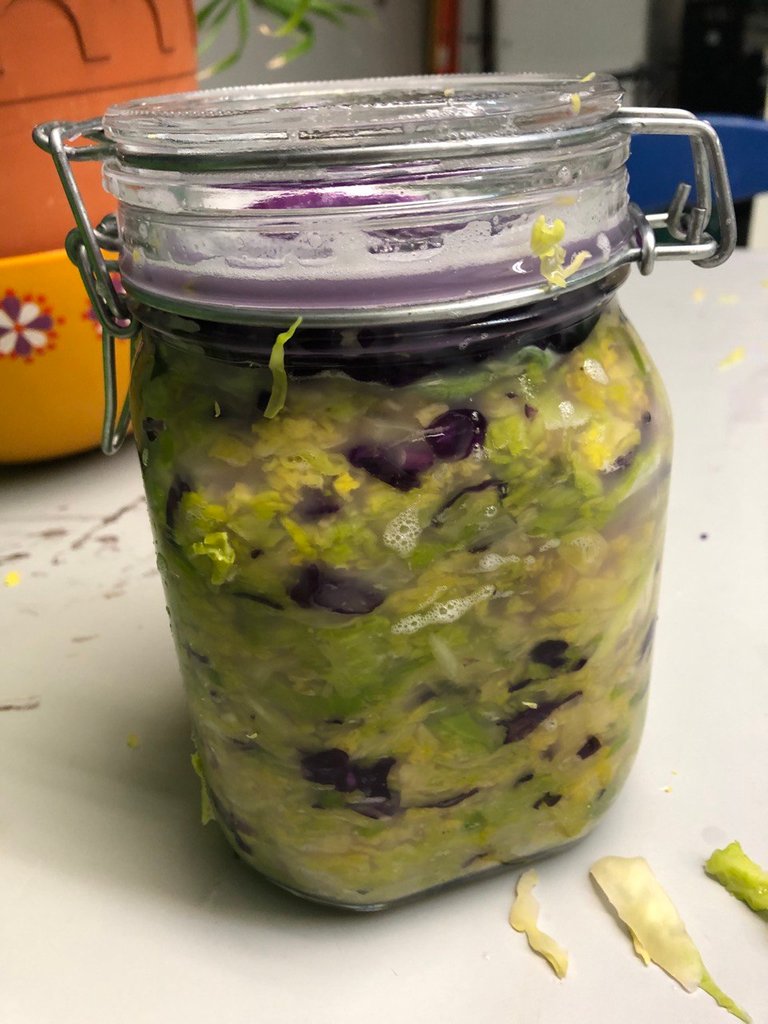
Now the mason jar is ready to be closed for fermentation.
Step Six
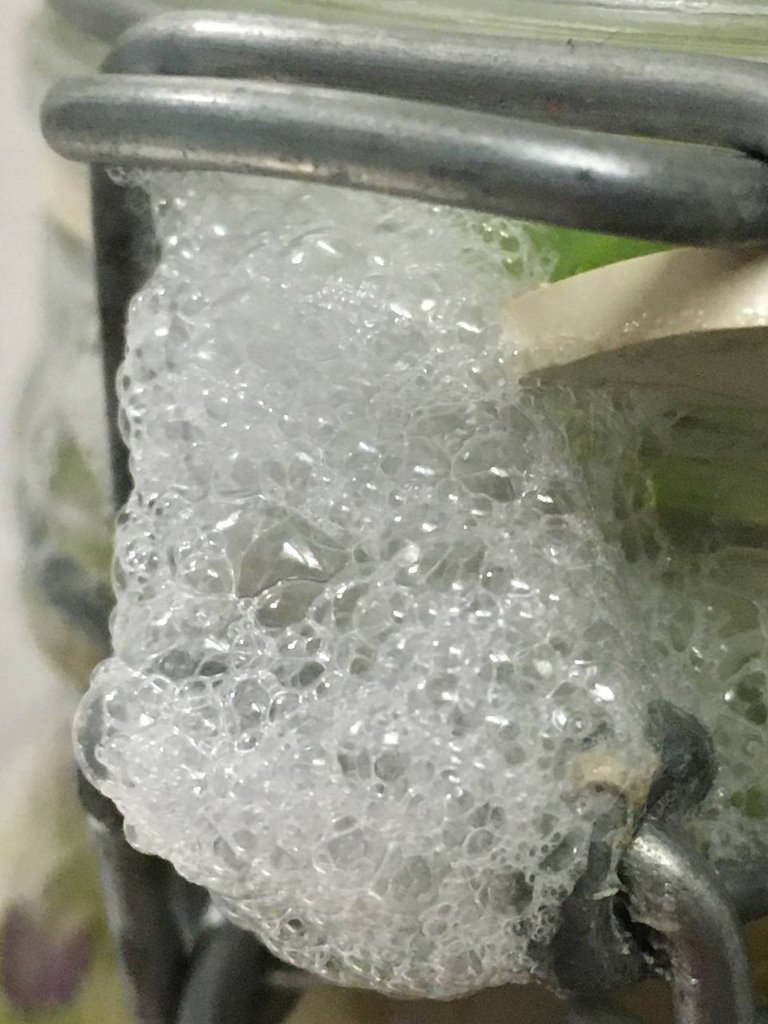
Check closed mason jar for possible release of air for the next 4-6 days. You can also use a cloth to cover the jar for that period.
Step Seven
Leave Jar closed to ferment for up to six months.
Below 7.5° C fermentation time up to 6 months.
At 18° C fermentation time 20 days.
At 32-36° C fermentation time 10 days.
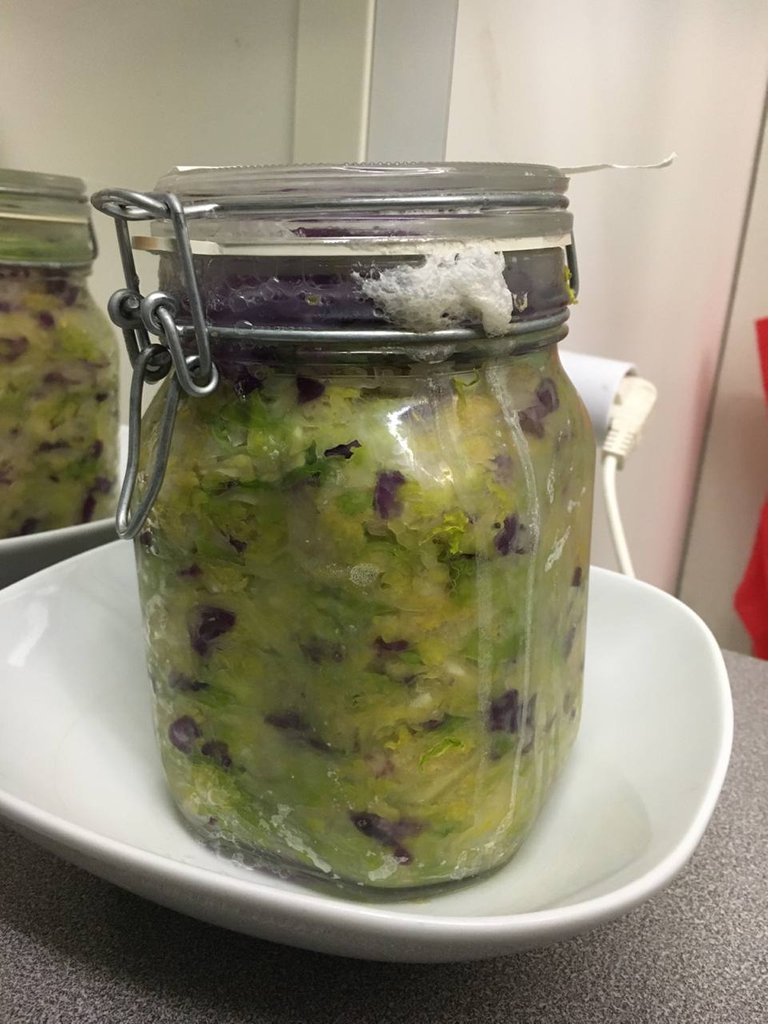
Conclusions
Leuconostoc mesenteroides - they are the smallest lactic acid bacteria. They start the fermentation less than a third of a percent of lactic acid. Also known as heterofermenters, they produce different compounds. These include lactic acid, acetic acid (vinegar), ethyl alcohol, carbon dioxide (soda gas) and mannitol. One of the bitter compounds produced by the Leuconostoc mesenteroides is later metabolized by Lactobacillus plantarum. The temperature should not exceed 22° C. higher temperature also affect the flavour.
Lactobacillus plantarum - This strain continues to produce lactic acid. Also known as a homofermenter it consumes sugars and produces lactic acid. This imparts the acidic taste to fermented food. The fermentation continues until all the sugars are exhausted.
Lactobacillus pentoaceticus ( L.brevis) - By now the acidity level reached arount 3% and the fermentation reaches it's climax.
Health Benefits
These Bacteria have metabolites that lower our blood sugar. It is also proven to reduce the effects of neurodegenerative diseases, alzheimer, dementia and possibly cure many more conditions.
L. mesenteroides is also known to help in the reduction or alleviation of flora imbalance that causes Candida albicans and Candida glabrata.
L. mesenteroides also mould the composition of microbes, creating immunity to pathogenic bacterial species.
In an age of dysbiosis, the same companies that sell you diet cola, produce glyphosate, antibiotics and prophylactics for live stock also produce anti-inflammatory drugs.

One wonders who all these food companies belong to?
Great Food
Fermentation can be a great way to add a prebiotic and probiotic addition to a balanced diet of natural foods. Fermenting various different vegetables can improve the gut flora and the structural integrity of your gut mucosal barrier. We all have a different enterotype, shaped by our body mass, the amount of exercise, cultural activities and dietary habits. Specially early on in life. This depends on whether one is born vaginally or with a c-section. Also, if you have a frenzy for cleanliness and sterilising everything, you might be surprised that this can be counter productive. Bacterial toxins outside interact with our GI and improves our flora and it's immunoregulatory response. These molecules include lactic acid bacteria (LAB), peptidoglycan, and exopolysaccharides (EPS). Their immunomodulatory capabilities has also given them the name immunobiotics.
Finally I decided to start fermenting more and hope I might have been able to inspire you. If you are more interested in this topic, try and search:
insular cortex, vagus nerve, parasympathetic nervous system, bifidobacterium and lactobacillus, gut-brain-axis, enterotype, systems biology, computational biology, in vitro colon stimulation, microbiome, microbial genome, microbiotic genome, mycobiota, saprophyte.
| Category | #hive-180569, #herbalhive |
| Camera | Iphone 8 |
| Location | Switzerland |
| Photographer | @yangyanje |

Here are all my previous recipes, always vegan in case you feel like trying something else:
If you're interested in reading my longest rant about being vegan ever, you should also check out my post: Vegan Cuisine

Vanishing
Dong Chang 东厂
aka Rane

'Observe it within, be with it. Merge with it. It will make you stronger. Once you become one and unite, it will feel like you are beyond limitations; for it is who you were always meant to be. - @yangyanje

Feel free to tip Wallets for support:
Bitcoin
3Mvofn1VynU168DuYtMsDqnUMSw7nQ8JEQ
Ethereum, XDAI, Polygon, Binance Smart Chain...: 0x0398edefB9d18A6a7c9fe573bdeedB7797283Ae5
Tezos:
tz1iSv5gWfPqUqaGChhfX8Vj3yquj36fad2Y
Cosmos:
cosmos1l66z8kxxgvftw7cprz5dlzvzm4tyefhrvm3w03
Solana:
9AmMfaerhNgsz2maByDUGrPMKYQRVeYQXJvCe9n48Fti
Terra
terra1m7q65zpa8y2zamjxqtnt43tprm36utkckdqf3a
Osmosis
osmo1l66z8kxxgvftw7cprz5dlzvzm4tyefhryqz7er


| 10 HP | 20 HP | 30 HP | 100 HP | 250 HP | 500 HP | 1000 HP | 2000 HP | 5000 HP |
|---|


 Admin at the Hive Rocks Community
Admin at the Hive Rocks Community


This post has been manually curated by @steemflow from Indiaunited community. Join us on our Discord Server.
Do you know that you can earn a passive income by delegating to @indiaunited. We share 100 % of the curation rewards with the delegators.
Here are some handy links for delegations: 100HP, 250HP, 500HP, 1000HP.
Read our latest announcement post to get more information.
Please contribute to the community by upvoting this comment and posts made by @indiaunited.
Thanks for sharing a recipe and a step-by-step guide 🙂 I have been eating more fermented vegetables lately and I can feel how good they are for me. I buy them ready-made though because it's just difficult for me to find the motivation to prepare them myself. I really don't like the taste though so I have to kind of force-feed myself.
@mamrita Thank you for your comment. Been thinking about the logistics myself when it comes to the fermentation process. Specially also the flavour. I guess i'd add some chilli to mine also. I was thinking of adding a few drops of maple leaf sirup or maybe even some herbs. One flavoured with parsley and another one with sage.
Are you a doctor or a microbiologist? Your explanations are really detailed!
I've been reading about gut health affecting our happiness or mental health. I have never paid attention or cared in the past about the types of food that I should eat to help my gut but now, I've been trying to incorporate yogurt into my diet to get those probiotics. It's a bit expensive here though. I know I could make my own. Way back in college, we were able to make yogurt for school. I'm just a bit scared of how sterile our house is for yogurt making. Maybe I'll just have a go at it.
Thank you for your comment @glecerioberto. The study of research papers on this matter has been fascinating me since 2014. I got inspired by a computational biologist, interested in the microbiome and environmental microbiology who goes by the name of Rob Knight. Always enjoyed biology when I grew up, and these writings help me to better understand these processes. This is an accumulation of my recent findings derived from various research papers found on US national library of medicine, the national library for biotechnology information and frontiers in microbiology. Apart from the many separate studies I make connections from various research papers to write these original publications. I also cited a few relevant articles in some links. Mushrooms and their effect on the gut microbiome and a short chain fatty acid metabolite called butyrate is really interesting and something you might enjoy looking up. I'd like to write much more on that matter as well. I often tried to tie these relationship into my mushroom protocol posts. I guess it just makes this a really odd cooking book?
Thanks
Oh. Mushrooms. That's why.
Butyrate reminds me of butyric acid which brings up not-so-good (smelling) memories from our chemistry classes. 😅
It seems to have a lot of health benefits and can be obtained from food with prebiotics and dietary fibers. I'll read more on it. I find it quite interesting.
Thank you for sharing this, SO with the long fermentation is a fridge best? to keep temp low? I always buy my sauerkraut but this look so easy
Thank for commenting. Glad if it can be of use. The fridge seems like a great option. Kneading it is intense and takes a bit of power and patience. With a home made one you're better off because a lot of the ones you buy apparently also use artificial fermentation processes and aren't as biotic.
I love sauerkraut, I have never managed to wait 6 months though, I usually wait 3. Been making some Kimchi which I also love as well. Need to et back on it to be honest, I have let them all slip with the move xxx
This is so interesting. I am sure one can really play with the flavour? Had a very intense dream about cabbages in 2019. there were various foods and probiotics. It's all very new to me. The fermenting i mean. Im going to try to grow some this year.
I meant to say also that this post inspired me to try this myself. I want to give this a chance, I mean to start eating a lot of fermented cabbage to see if this can improve my digestion. It kind of feels like that so far and I'll for sure save money if I make it myself. The only thing that seems like a bit of a challenge is the kneading, especially since I would like to make quite a lot. But I guess it's worth the effort.
20 days also seems more doable for me than 6 months. I mean, I hope I have moved in 6 months 🙂
Do you have any suggestions on how the fermented cabbage can be easier to eat though because I struggle with this?
That was the idea. I actually got inspired by visiting this kitchen where I took these pictures. There's a company that produces fermented veggies there. They also use fruits to ferment along with the veggies, so I believe you can be really creative and don't restrict yourself. You actually inspired me to write this post after we once spoke about prebiotic and probiotics.
Yes, the kneading is a really meditative process and one kneads it for quite some time until all the juices come out. You have to feel that cabbage all over your hands. I am so sure that's actually where the magic lies, apart form the fact that the cabbage does everything else with the bacteria it contains. I'd go for the 20 day process. Leave it outside at 18-21° C. After that, maybe add a day or two more, before putting it in a fridge. I'd add some good French vegetable bouillon. You can also add juniper berries, various herbs, like chives or parsley, or sage. Maybe a good combination of 2-3 herbs. You can also do 25% other veggies and herbs if the cabbage is 75% of your mason jar.
This actually makes it much more fun. You can name them and label them. If it's Mexican style, you could paint a sombrero hat on the label...I'm drifting off here...
I think my article here wasn't about the recipe. I'm looking forward to experiementing with fermented vegetables and other fermentation this year. I should have also mentioned short chain fatty acids, but I didn't want to make this article too long.
Chili powder, ginger, garlic, spring onions can also be added and would make it more of a kimchi direction. Why not?
I think one can be creative with fermentation if one knows that it's not going to go off. It doesn't. A friend of mine ran a restaurant with dehydrated and fermented veggies in India.
I would make one with mustard seeds, dill/oregano and chives or just thyme.
Just oregano, black pepper and chili can also give it a nice flavour.
I have read online once that some even add cranberries. Why not?
Had all these creative ideas with fruits as well and I think when you work in a clean environment and really precook your jars or put them in an oven, you can probably ferment almost anything.
Congratulations @yangyanje! You have completed the following achievement on the Hive blockchain and have been rewarded with new badge(s):
Your next target is to reach 36000 upvotes.
You can view your badges on your board and compare yourself to others in the Ranking
If you no longer want to receive notifications, reply to this comment with the word
STOPCheck out the last post from @hivebuzz:
Support the HiveBuzz project. Vote for our proposal!
Nice post bro. My wife was just telling me that She wanted to make Khambucha. Will show her this.
simple, clear, starting from the point.
Thanks for a great recipe! Loved your approach. Thank you!
Thanks for your encouraging comment. I'd like to practice to write more concise. The irony was that it was less about the recipe and more bout enterotypes, the enteric nervous system and endobiongenic processes and epigenetics that alter gene expression. It was so nice you stopped by. By the way I really enjoy your photo manipulation art. So impressive. :)
Thanks for the reminder to make sauerkraut again! I just finished a store bought one which had a native pepper in it and some fennel seeds which was delicious. I had it with some grated beetroot as a salad last night (fresh from the garden) and it was sooo delicious!
Hey YYJ! Just wanted to drop by and say a HUGE...
for giving my channel a follow! I appreciate it very much!
Hoping this message finds you well wherever you are!
I went straight up to step 3 because I am initiated and now my cabbage is all juicy, I've been juicing it for a while now what should I do with it. 😂
"Blague a part", you've been doing that proper probiotic shit, really impressive bro!